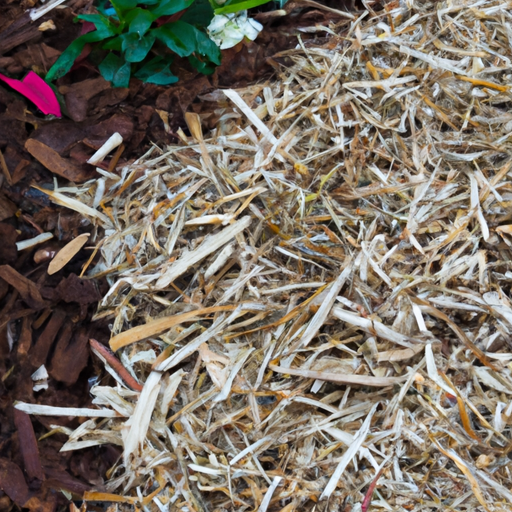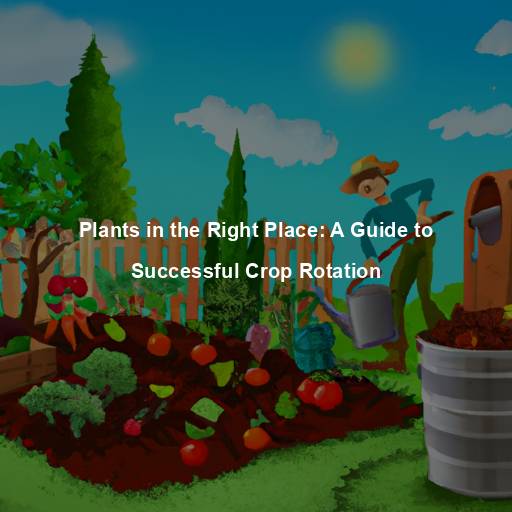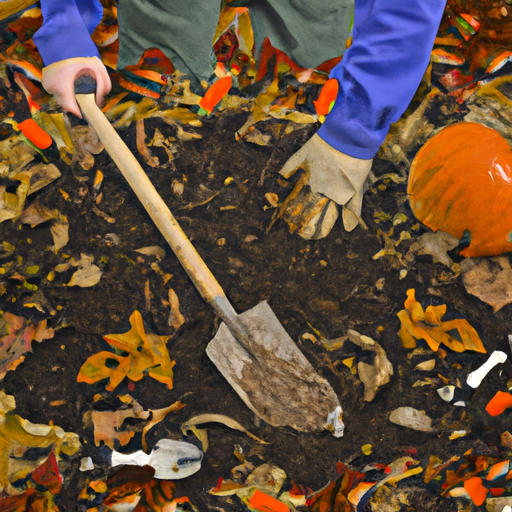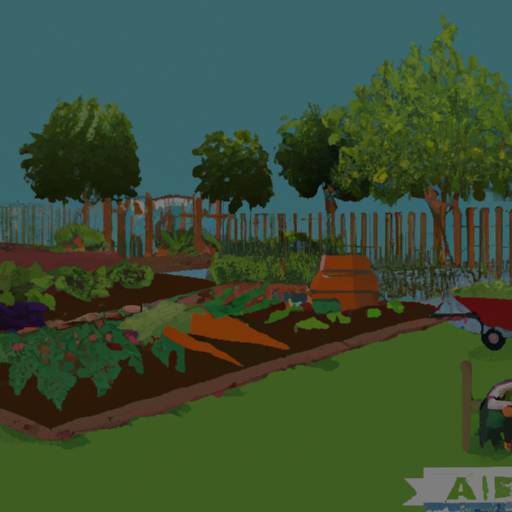Hey there, fellow green thumbs! As a Master Gardener, I’m always on the lookout for ways to make my garden more environmentally-friendly.
One simple yet effective way to do this is by using eco-friendly mulching options in your garden beds.
Mulch not only helps retain moisture and suppress weeds, but it also adds organic matter to your soil as it breaks down over time. However, traditional mulches like wood chips or straw can have negative impacts on the environment.
Wood chips are often made from trees that were cut down specifically for landscaping purposes, while straw may contain pesticides or other harmful chemicals. But don’t worry – there are plenty of alternative mulching materials out there that will keep both your plants and the planet happy!
Keep reading to learn about some of my favorite eco-friendly mulching options for your garden beds.
Composting As Mulch
Picture this: a lush garden bed, filled with vibrant green plants and colorful blooms. Now imagine that same garden bed surrounded by rotting food scraps, yard waste, and other organic materials slowly decomposing into rich soil.
This is the magic of composting as mulch. As a Master Gardener, I can attest to the benefits of using composted materials in your garden beds. Not only does it provide excellent vermin control by deterring rodents from nesting in your soil, but it also adds valuable nutrients back into the earth.
Composting is an easy way to recycle kitchen and yard waste while simultaneously creating a nutrient-rich substance for your plants. But what makes compost so special? The nutrient content! Compost contains essential elements such as nitrogen, phosphorus, and potassium that are vital for plant growth.
By adding this natural fertilizer directly to your garden beds, you’re providing your plants with everything they need to thrive. Incorporating compost into your mulching routine not only benefits your garden but also helps reduce landfill waste. So why not give it a try? Your plants (and the planet) will thank you.
Leaves As Mulch
Leaf shredding is a great way to create nutrient-rich mulch for your garden beds. By using fallen leaves, you can recycle yard waste and avoid contributing to landfills.
Leaves provide an excellent source of organic matter that helps retain moisture in the soil while also suppressing weed growth. When leaves are shredded or chopped up, they break down faster and integrate into the soil more easily. This process enriches the soil with essential nutrients like nitrogen, phosphorus, and potassium.
Additionally, leaf mulch acts as insulation during colder months, protecting plants from frost damage. So don’t be so quick to rake up those leaves this fall – instead, consider using them as mulch in your garden beds!
Grass Clippings As Mulch
As we discussed in the previous section, leaves make for excellent mulch material. However, there are other options available that you can use to keep your garden beds healthy and happy. Grass clippings are one such option that not only help reduce waste but also offer several benefits when used as a mulching material.
Benefits of using grass clippings as mulch:
1. Nutrient-rich: Grass contains nitrogen, phosphorus, and potassium, which makes it an excellent source of nutrients for your plants.
2. Weed suppression: Using grass clippings as mulch helps suppress weeds by blocking sunlight from reaching weed seeds.
3. Moisture retention: Mulching with grass clippings slows down water evaporation from the soil surface, keeping moisture levels consistent.
Tips for using grass clippings as mulch in your garden beds:
1. Use dry or partially dried clippings to avoid creating a slimy mat that could harm plant roots.
2. Spread the clippings thinly to prevent them from matting together and blocking air circulation.
3. Avoid using freshly cut lawn trimmings treated with chemicals like herbicides or pesticides.
Overall, incorporating grass clipping into your gardening routine is an easy way to improve soil health while reducing yard waste at the same time!
Pine Needles As Mulch
As a Master Gardener, I can attest to the benefits of using pine needles as mulch in your garden beds. But before we dive into those benefits, let’s talk about some alternatives that you may have considered. While there are many environmentally-friendly options out there, such as grass clippings or shredded leaves, they may not always be readily available or practical for your specific needs. This is where pine needles come in handy. Not only do they provide excellent insulation and moisture retention properties, but they also break down slowly over time, providing long-lasting nutrients for your plants. Plus, their natural acidity makes them perfect for acid-loving plants like blueberries and azaleas. So next time you’re thinking about alternative mulching options, consider giving pine needles a try. Trust me, your garden will thank you.
| Benefits of Pine Needles | Pine Needle Mulch Alternatives |
|————————–|———————————–|
|Provides Insulation |Grass Clippings |
|Retains Moisture |Shredded Leaves |
|Slow Breakdown |Wood Chips |
Note: Don’t forget to wear gloves when handling pine needles as they can prick your skin!
Newspaper Or Cardboard As Mulch
Newspaper and cardboard can both be used as environmentally-friendly mulching options for your garden beds. Using newspaper as a mulch has many benefits, such as preventing weed growth and retaining moisture in the soil.
To use newspaper as a mulch, simply lay down sheets of newspaper on top of the soil around your plants, making sure to overlap each sheet to prevent any gaps where weeds could grow through. Wet the newspaper thoroughly with water and then cover it with another layer of organic material like leaves or grass clippings.
Cardboard is also an excellent choice for mulching your garden beds. It provides similar benefits to newspaper but can last longer due to its thicker texture.
When using cardboard as a mulch, make sure to remove all tape and staples before laying it down in your garden bed. Cut the cardboard into manageable pieces that can easily fit around your plants and wet them thoroughly with water before covering them with a layer of organic matter.
Overall, using either newspaper or cardboard as mulch in your garden beds is an easy way to improve soil health while reducing waste. With proper application and maintenance, these materials can help keep weeds at bay and retain moisture in the soil, ultimately leading to healthier plants and a more robust harvest come gardening season.
Frequently Asked Questions
Can I Use Mulch Made From Recycled Materials?
Recycled mulch is an excellent choice for gardeners looking to reduce their carbon footprint while still maintaining a beautiful and healthy garden.
Not only does it benefit the environment, but recycled mulch also provides numerous eco-friendly benefits such as improving soil health, reducing weed growth, and retaining moisture in the soil.
There are many sources of environmentally-friendly mulch available that can be made from a variety of recycled materials including yard waste, shredded paper, and even old tires.
As a Master Gardener, I highly recommend utilizing these sustainable options in your garden beds to not only enhance the beauty of your landscape but also promote a more sustainable future for our planet.
How Often Should I Replace My Mulch?
How often you should replace your mulch depends on the type of material used.
Organic mulches, such as wood chips and leaves, break down over time and need to be replenished every one to two years.
However, there are many benefits of organic mulch, including improved soil health and moisture retention.
On the other hand, inorganic or synthetic mulches can last up to five years without needing replacement but may not provide the same level of nutrients for your plants.
Signs of overused mulch include a sour smell or slimy appearance, which indicates that it’s time for a change.
As a Master Gardener, I recommend incorporating organic materials into your garden beds regularly and monitoring their condition to ensure they’re providing the best possible environment for your plants.
Can I Use Mulch On Top Of Plants That Are Already In The Ground?
Can you use mulch on top of plants that are already in the ground? Yes, you can!
Mulching is a great way to maintain soil health and keep your garden beds looking beautiful. However, it’s important to remember proper mulch maintenance to ensure its effectiveness.
As a Master Gardener, I recommend checking your mulch regularly for signs of compaction or mold. If necessary, add more mulch as needed to keep a healthy layer between your plants and the sun.
By using mulch properly, you’ll help maintain optimal growing conditions for all your garden plants.
Is There A Type Of Mulch That Repels Pests Naturally?
If you’re looking for an eco-friendly and natural pest repellent mulch option, consider using cedar chips or pine needles.
These materials not only act as a barrier to pests but also break down slowly over time, providing nutrients to your soil.
Another option is using cocoa bean shells which have been known to repel slugs and snails due to their caffeine content.
However, be cautious if you have pets as cocoa bean shells can be toxic when ingested.
Always research the type of mulch you choose to ensure it fits your garden’s needs and requirements.
How Much Mulch Should I Use For My Garden Beds?
When it comes to mulching your garden beds, a common question that arises is how much mulch should be used.
It’s important to remember that proper mulch coverage can help retain moisture and suppress weeds while also regulating soil temperature.
Mulching techniques may vary depending on the type of plants in your bed, but as a general rule of thumb, aim for a 2-3 inch layer of mulch.
Be sure not to over-mulch though, as this can lead to suffocating the plants and limiting their growth.
As always, consult with a Master Gardener or trusted gardening resource for personalized advice specific to your garden needs.
Conclusion
In conclusion, as a Master Gardener, I highly recommend using environmentally-friendly mulching options for your garden beds.
Not only will it help retain moisture and protect the soil from erosion, but it also helps to reduce waste by utilizing recycled materials.
When choosing a mulch, consider its lifespan and how often you need to replace it.
You can even use mulch on top of plants that are already in the ground!
And if pests are an issue in your area, try using natural repellents like cedar or eucalyptus mulch.
Remember to always follow proper guidelines for how much mulch to use based on the size of your garden bed.
As we strive towards sustainable living practices, let’s not forget about our gardens.
By adopting eco-friendly gardening habits such as using recycled material-based mulches, we’re taking one step closer towards helping the environment thrive.
Let’s be responsible stewards of this planet and make our gardens a reflection of these values!






